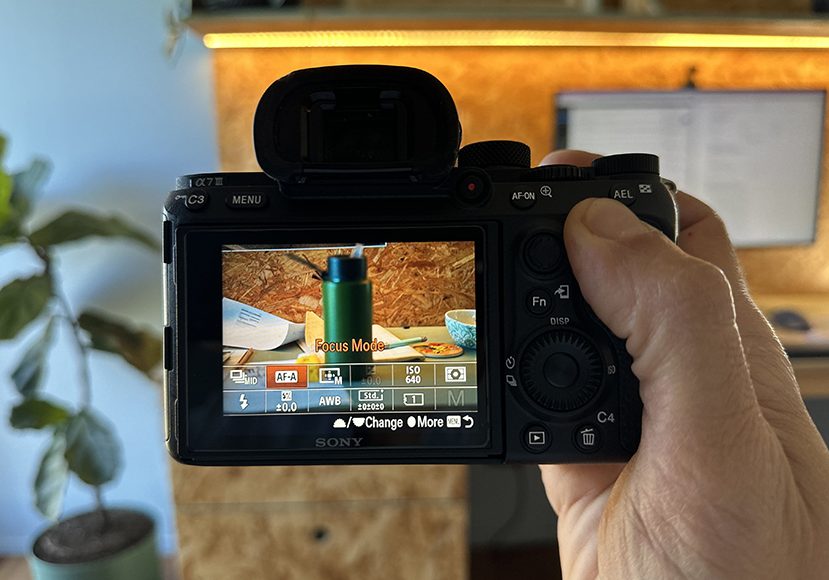
Camera Focus Modes (What to Use, When & Why)
Everything you need to know about focus modes in photography: what they are, when to use them, and which to use for your style of photography.
Learn | By Mark Condon | Last Updated: August 11, 2023
Mastering the focus modes of your camera is an essential step in improving your photography.
The most annoying part of the process is that each camera brand names focus modes in different ways!
However, this guide is here to help – it’s the guide I wish I had when I first started photography.
So if you’re confused about how to change your focus settings, and which focus mode to use in what situation, I’ve got your back.
I’ve researched how to adjust focus modes on all the main camera brands, and also which ones you should be using.
Let’s dive right in!
What Are the 2 Main Camera Focus Modes?
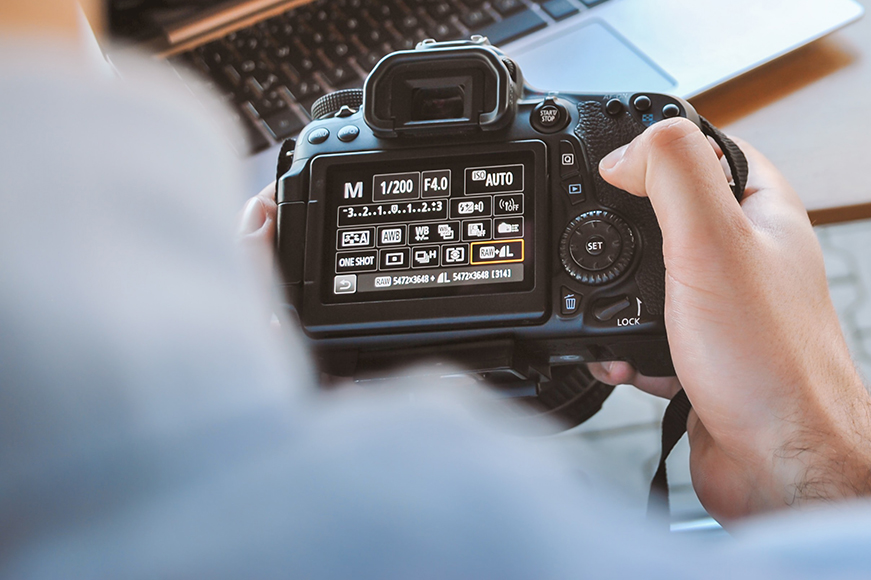
Ever wondered how some photos come out tack-sharp while others look like they’ve been taken in a foggy mirror?
Well, the secret to that crispness lies in understanding your camera’s focus modes.
Whether you’re shooting your friend’s giggles at a party or a bird taking off in the wild, the focus mode you choose can make or break your photo.
Here are the 2 main focus modes you need to know about:
1. Manual Focus Mode (MF)
Manual Focus Mode is just like it sounds – it’s all about going hands-on and adjusting the focus of your camera lens manually.
No tech, no fuss. You just turn the focus ring on your lens until your subject is sharp.
This focus mode can be a lifesaver in low light situations or when your camera’s having trouble locking focus automatically.
It also gives you full control over the creative aspects of focus, like when you’re going for that dreamy, blurred background effect.
I like to use it when the subject is heavily backlit and my camera’s auto-focus is getting confused.
I also put my camera into manual mode for macro photography, just so I can control exactly where the narrow blade of focus lies.
2. Autofocus (AF)
Autofocus mode is your camera playing the smarty-pants and doing the focusing for you.
Most cameras today have a very advanced Autofocus system that quickly and accurately focuses on your subject.
It’s a big time-saver, especially when you’re shooting moving subjects like athletes or wildlife.
There are different types of Autofocus modes (like Single-Point, Continuous, and Hybrid that we discuss later), each suited to different shooting scenarios.
How Much Do You REALLY Know About Photography?! 🤔
Test your photography knowledge with this quick quiz!
See how much you really know about photography...

When in doubt, letting your camera take the wheel with Autofocus is a safe bet for clear, sharp photos.
I leave my cameras in AF mode 99% of the time – modern DSLR and mirrorless cameras are pretty-darn good at knowing what I want to focus on!
Understanding the Different Autofocus Modes
Autofocus modes are basically like your camera’s guidance system, telling it how and where to focus.
This isn’t just camera jargon, it’s the secret sauce to getting your shots looking sharp and professional.
Now, depending on what brand of camera you’ve got, these modes might go by different names but don’t worry…
We’ll break down three key autofocus modes and how they’re referred to across Nikon, Canon, Sony, Fujifilm, Leica, Panasonic, and Pentax.
1. Single-Point Autofocus
Single-Point Autofocus is like putting all your eggs in one basket – but in a good way.
This mode lets you manually select a single point in your frame for the camera to focus on.
It’s perfect for static subjects, where you want to control exactly where the focus falls.
I use Single point focus mode 90% of the time, since I like being able to select my subject.
Nikon and Canon keep things simple with Single-Point AF and Manual Selection: 1-point AF respectively.
Sony likes to be flexible with the name Flexible Spot or Center.
Fujifilm says what it does on the tin with Single Point.
Leica goes for the name Spot or 1-Point.
Panasonic calls this 1-Area.
And Pentax refers to this as Select.
2. Continuous Autofocus (Continuous Focusing Mode)
With Continuous Autofocus, your camera is working overtime to maintain focus on your subject, even when it’s moving.
Think of it like a detective tailing a suspect – it won’t let the subject out of its sight.
I find that depending on the camera model and brand, Continuous focusing mode can vary greatly in efficacy.
For example, on my Leica Q2 (a $5,000 camera!), the continuous AF jumps around a lot and is unreliable for fast moving subjects.
However, on my Sony a7III, it works very well.
Nikon names it as Continuous-Servo AF (AF-C).
Canon calls it AI Servo AF.
Sony labels it as AF-C or Continuous AF.
Fujifilm simply goes for AF-C.
Leica uses the term Continuous AF.
Panasonic goes with AFC (Auto Focus Continuous).
And Pentax refers to it as AF.C.
- See also: AI Focus vs AI Servo modes
3. Hybrid Autofocus
Hybrid Autofocus is like the superhero of focus modes – it combines the best of both phase-detection and contrast-detection autofocus systems.
This makes it speedy and accurate, ideal for a range of shooting conditions.
Nikon, Canon, Sony, Fujifilm, Leica, Panasonic, and Pentax all refer to this system as Hybrid AF.
The functionality and performance may vary between brands and models, but the overall concept remains the same.
How to Use the Different Autofocus Area Modes
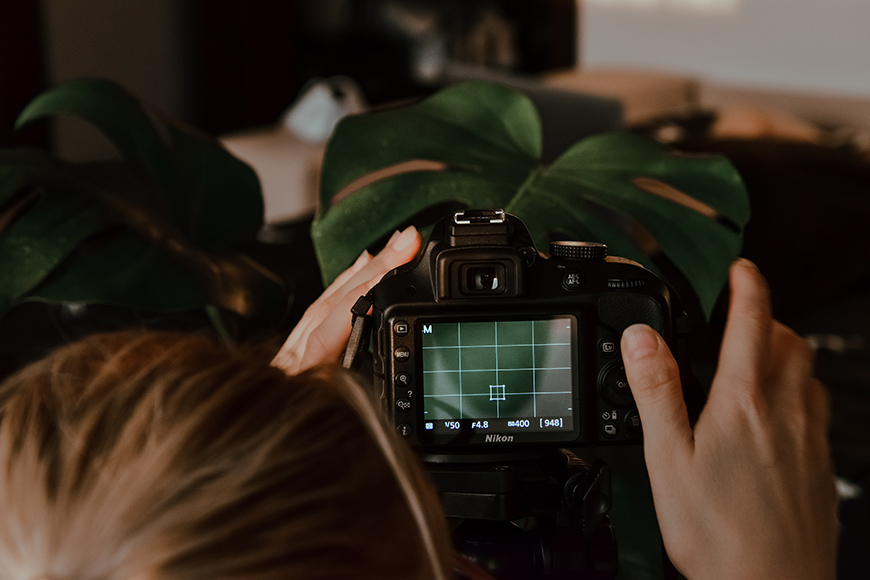
Credit: Didssph
So you want to take killer photos, right? Then getting to grips with autofocus area modes is a must.
Focus modes in photography are like the compass for your camera, telling it where to focus within your shot.
Your choice of focus mode can speed things up or slow them down and it can make your photos either super crisp or a bit blurry.
Basically, it’s a big deal if you want your pics to look pro.
Now, different camera brands call these modes different things, but they do pretty much the same job.
Now let’s look at all the most popular camera brands’ autofocus modes.
1. Automatic Area AF Mode
In the Automatic Area AF Mode, the camera decides which area of the frame to focus on.
This mode is generally best suited for shooting scenes with little movement or simple compositions where the subject is in the center of the frame.
It can, however, be unpredictable with complex compositions.
Nikon refers to this mode as Auto-Area AF.
Canon names it as Automatic Selection: 45-point AF (number of points may vary based on camera model).
Sony refers to this mode as Wide or Zone.
Fujifilm: Uses the name Multi.
Leica: It’s typically called Multi-Field or Multi-Point.
Panasonic: This is often referred to as 49-Area or 225-Area (the number of areas depends on the camera model).
Pentax: Calls this Auto or Auto 5.
2. Single-Point Area AF Mode
Single-Point Area AF Mode allows the photographer to manually choose one point in the frame upon which the camera will focus.
This mode provides precise control over the focus point, making it ideal for portraits, macro photography, and other scenarios where accuracy is crucial.
Nikon refers to this mode as Single-Point AF.
Canon calls this mode Manual Selection: 1-point AF.
Sony names it as Flexible Spot or Center.
Fujifilm: Refers to this as Single Point.
Leica: Calls this Spot or 1-Point.
Panasonic: Uses the name 1-Area.
Pentax: Refers to this mode as Select.
3. Dynamic Area AF Mode
Dynamic Area AF Mode uses a group of autofocus points surrounding the manually selected focus point to track a moving subject.
If the subject briefly leaves the selected point, the camera will use the surrounding points to maintain focus. This mode is best used when shooting subjects in motion, like sports or wildlife.
Nikon refers to this mode as Dynamic Area AF.
Canon names this mode AF Point Expansion.
Sony calls this mode Expand Flexible Spot.
Fujifilm: Calls this mode Zone.
Leica: Does not have an exact equivalent but Tracking AF is somewhat similar.
Panasonic: Refers to this as Tracking or Custom Multi.
Pentax: Does not have a direct equivalent but Auto Tracking can be used in a similar way.
4. Group Area AF Mode
In the Group Area AF Mode, instead of selecting a single focus point, you can select a group of points. The camera will focus on the closest subject within the chosen group of points.
It’s particularly useful when the subject is difficult to isolate with a single point, like in bird or sports photography.
Nikon refers to this mode as Group-Area AF.
Canon calls this mode Zone AF or Large Zone AF.
Sony names it as Zone.
Fujifilm: Uses the name Zone.
Leica: Does not have a direct equivalent but uses Field as a broad area focus mode.
Panasonic: Calls this Zone.
Pentax: Does not have a direct equivalent.
5. Eye AF Mode
Eye AF Mode is a function that automatically detects and focuses on the subject’s eye – it was pioneered by Sony Alpha mirrorless cameras, but now other brands have adopted it.
It’s especially useful for portrait photography where focus on the eyes is critical. I use it always for wedding photography.
This focus mode offers a high level of precision, often focusing on the eye closest to the camera.
Most cameras allow you to set up a specific focus mode, and then have Eye AF engage supplementary to the other focus modes.
On my Sony a7IV, for example, I use a Dynamic Area Focus Mode, but Eye AF engages automatically when a subject is in shot.
Nikon refers to this feature as Eye-Detection AF.
Canon calls it Eye Detection AF.
Sony refers to it as Eye AF.
Fujifilm: Refers to this as Face/Eye Detection.
Leica calls it Eye Detection
Panasonic: Refers to this as Face/Eye/Body/Animal Detection.
Pentax: calls it Eye AF
Which Focus Mode Should I Use?
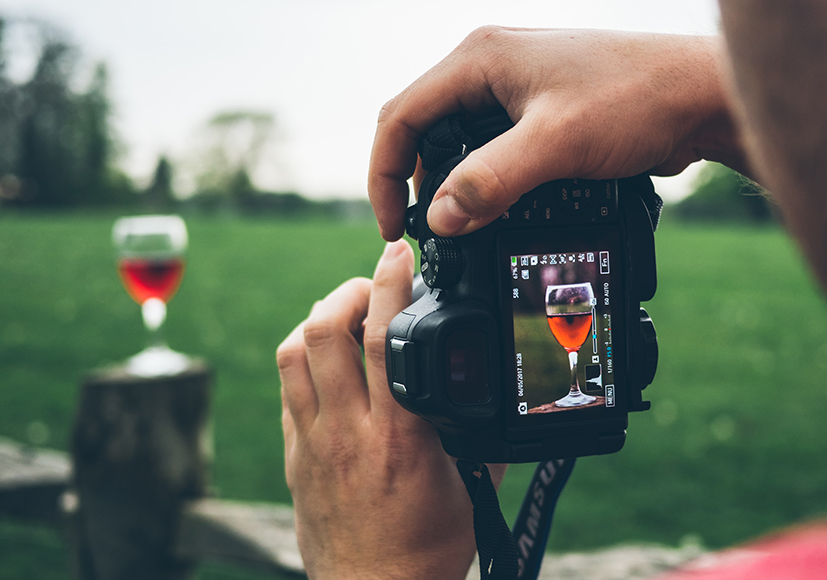
Credit: Jamie Street
The best focus mode to use with your camera will depend on the subject of your photography and the specific conditions.
Here are some general suggestions for different types of photography:
- Landscape Photography: Manual focus or Autofocus Single (AF-S) or One-Shot AF (Canon) modes are often best for landscapes. These modes allow for precise focusing on a specific part of the scene and the focus will not change unless you refocus.
- Portraits: Autofocus Continuous (AF-C) or AI Servo AF (Canon) can be useful when the subject may move slightly, as these modes continuously adjust focus. However, Autofocus Single (AF-S) or One-Shot AF (Canon) modes can also work well if the subject is stationary.
- Group Portraits: Autofocus Single (AF-S) or One-Shot AF (Canon) is typically best for group shots, as you can focus on a specific person (usually in the middle of the group) and the focus will stay locked as long as you hold the shutter button halfway down.
- Wildlife Photography: Autofocus Continuous (AF-C) or AI Servo AF (Canon) is generally best for wildlife photography, especially for animals that might be moving. Tracking or 3D focus mode (if available on your camera) can also be beneficial.
- Macro Photography: Manual focus is usually preferred for macro photography due to the extremely shallow depth of field. This allows for very precise control over the plane of focus.
- Sport/Action Photography: Autofocus Continuous (AF-C) or AI Servo AF (Canon) is generally recommended for fast-moving subjects. Additionally, many cameras offer a Tracking or 3D focus mode which can help keep focus on a moving subject. See also: best shutter speed for sports photography.
- Street Photography: The best focus mode can vary widely for street photography depending on your style. Some photographers prefer to use zone focusing (pre-focusing on a certain distance), which essentially utilizes manual focus. Others might prefer Autofocus Single (AF-S) or One-Shot AF (Canon) for quickly locking focus on a subject, or even Autofocus Continuous (AF-C) or AI Servo AF (Canon) for tracking moving subjects.
Remember that these are general suggestions and it’s often best to experiment with different focus modes to see what works best for your style and the specific shooting conditions.
What are Custom Focus Modes?
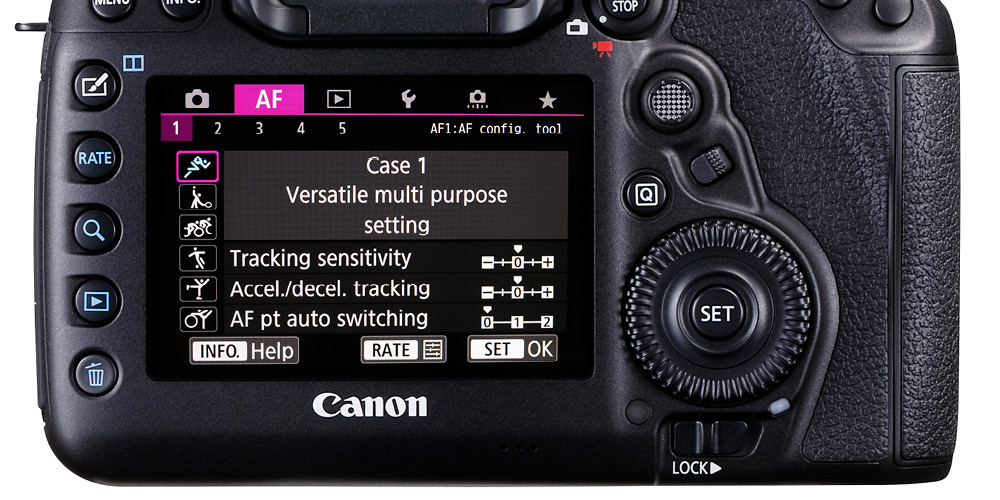
Credit: EOS Magazine
“Custom focus modes” typically refer to autofocus settings that can be customized according to the user’s needs.
These settings allow you to fine-tune how the autofocus system behaves, enhancing its performance for specific shooting scenarios.
Different camera brands have different names and sets of customizations.
For example, Canon has “AF Cases” where you can tweak tracking sensitivity, acceleration/deceleration tracking, and AF point auto switching. These options are particularly helpful when shooting subjects that move unpredictably, like sports or wildlife.
Nikon, on the other hand, has “AF Fine Tune” that allows users to correct small front or back focusing issues with specific lenses.
Sony also provides similar customization with its AF tracking sensitivity and AF areas.
In general, these “custom focus modes” give photographers more control over the camera’s autofocus behavior, allowing them to match the AF performance to the specific demands of their shooting style or subject matter.
How Can I Adjust the Focus Settings on My Camera?
Your camera’s ‘focus status’ can be changed according to the make and model of the camera.
Here’s a brief guide on how to adjust the focus settings (i.e. change focus modes) for each main camera brand:
Canon Camera: you can switch between AF and MF by moving the switch on your lens marked AF/MF. Once in MF, you can adjust the focus manually using the focus ring. Your focus status will be indicated in the viewfinder or on the LCD screen.
Nikon Cameras: Nikon DSLRs also have an AF/MF switch on the lens. Switching to MF lets you manually adjust the focus using the focus ring. The focus status is shown in the viewfinder.
Sony Cameras: you can often find the focus mode in the camera menu (check under the Camera Settings or Custom Settings menu). You can also manually adjust the focus (if your lens supports it) using the focus ring. The focus status can be seen in the viewfinder or on the LCD screen.
Fujifilm Cameras: To change focus modes on a Fujifilm camera, you can usually find the option in the AF/MF setting in the Shooting Menu. You can manually adjust focus using the focus ring on your lens. The focus status will be shown in the viewfinder or on the LCD screen.
Leica Cameras: switching between focus modes can be done through the camera menu. You can manually adjust focus using the focus ring. The focus status is typically displayed in the viewfinder or on the LCD screen.
Panasonic Cameras: the focus mode can be changed via the camera menu or a dedicated switch on the camera body (depending on the model). In MF mode, you can use the focus ring to adjust focus. The focus status will be displayed in the viewfinder or on the LCD screen.
Pentax Cameras: you can switch between AF and MF using the switch on the side of the camera body. You can manually adjust focus with the focus ring on your lens. The focus status is shown in the viewfinder or on the LCD screen.
Is Autofocus Mode Better Than Manual Focus Mode?
The decision of whether to use autofocus (AF) or manual focus (MF) can greatly impact your photography.
Both have their own unique strengths and weaknesses, and understanding these can help you choose the right focus mode for your situation.
Here’s the lowdown on the pros and cons of each:
| Focus Mode | Pros | Cons |
|---|---|---|
| Autofocus (AF) | Speedy, Accurate, Convenient | Struggles in low light, May focus incorrectly, Limited control |
| Manual Focus (MF) | Full Control, Better in low light/difficult scenes, No hunting | Time-consuming, Requires skill, Harder on DSLRs |
Whether AF or MF is “better” depends largely on the context and your personal preferences.
For quick and accurate focusing in most situations, AF is likely the best choice.
But for difficult lighting conditions or creative compositions, MF might give you the edge.
The key is to understand the strengths and weaknesses of each and to practice using both so you’re prepared for any shooting situation.
As I mentioned before, my cameras are use autofocus 90% of the time, with manual focus reserved for complex lighting scnarios or macro photography.
Specific Focus Mode FAQs
What AF mode should I use?
The AF mode you should use largely depends on your subject. If your subject is stationary, modes like Single-shot AF (AF-S) or One-Shot AF are ideal. For moving subjects, Continuous AF (AF-C), AI Servo, or AFC modes are generally better.
What is the difference between AF-S and AF-C?
The difference between AF-S (Auto Focus Single) and AF-C (Auto Focus Continuous) lies in their handling of subjects. AF-S locks focus once it’s achieved, making it great for stationary subjects. AF-C, on the other hand, continuously adjusts focus, making it ideal for moving subjects.
How do you use autofocus?
To use autofocus, half-press the shutter button (or use the AF-On button if your camera has one). Your camera will then automatically focus based on the chosen autofocus mode and autofocus point(s). Once focus is achieved, you can fully press the shutter button to take the photo.
How do I change the focus mode on my camera?
Changing the focus mode on your camera typically involves navigating to the appropriate menu on your camera’s LCD screen, an EVF or using a physical switch on the camera body or lens, depending on the model. Refer to your camera’s manual for exact instructions.
What are the best camera focus modes?
The “best” focus modes will vary based on your subject and shooting conditions. However, Single-shot AF (AF-S)/One-Shot AF, Continuous AF (AF-C)/AI Servo, and Automatic AF (AF-A)/AI Focus AF, which switch between the two, are often considered standard, versatile modes for a wide range of situations.

Check out these 8 essential tools to help you succeed as a professional photographer.
Includes limited-time discounts.













